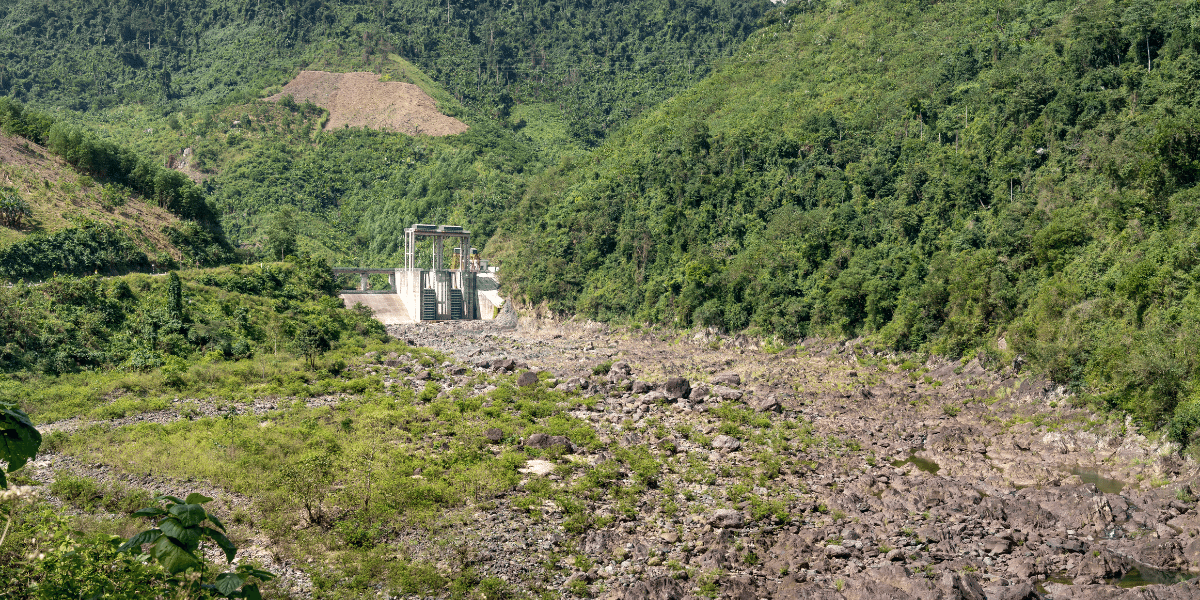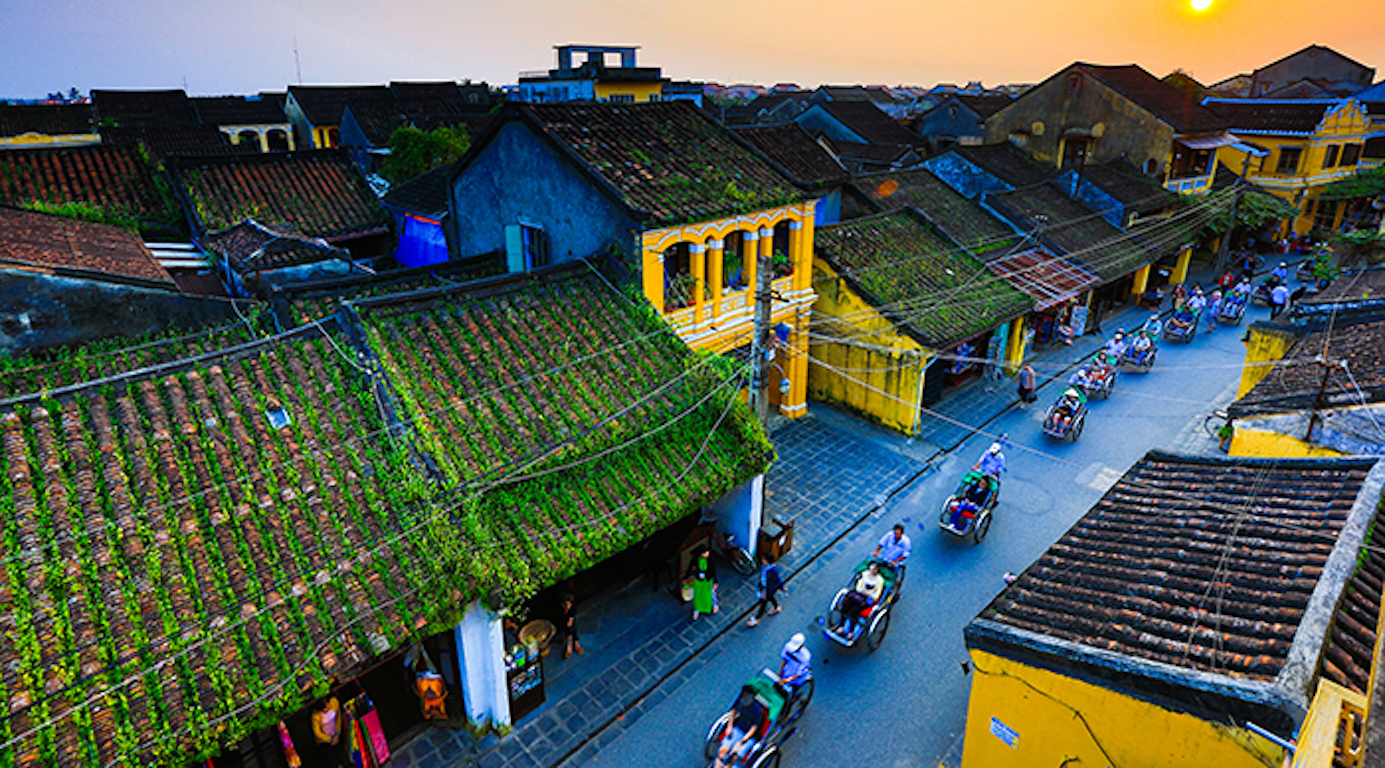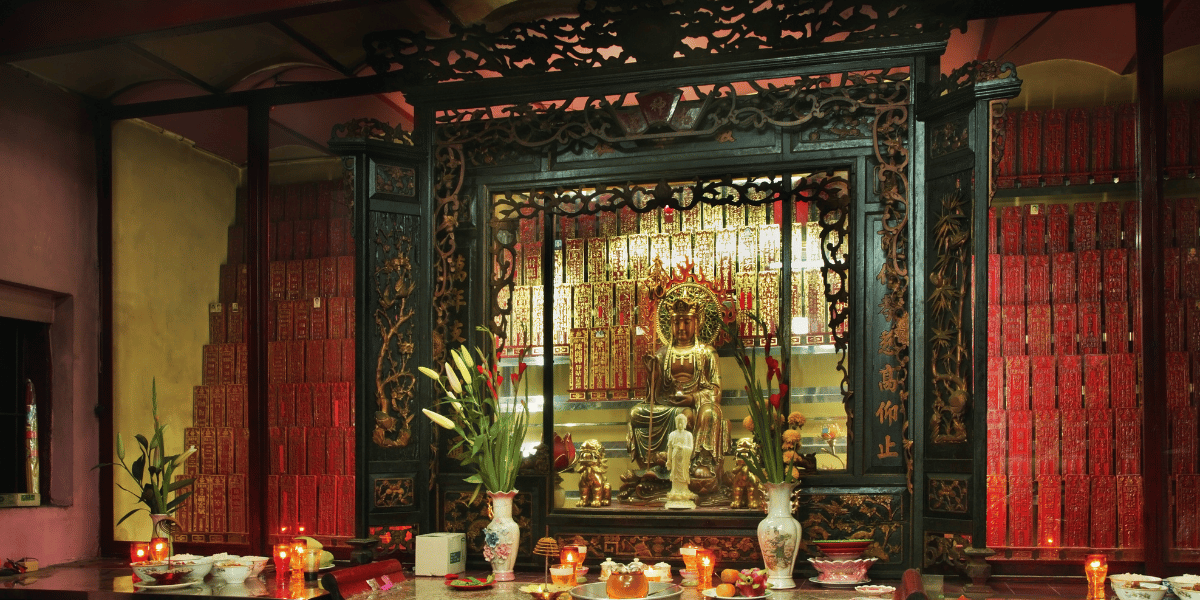Bac Ninh: Top Attractions You Must Visit
Last Updated on 21 March, 2025 by admin
Just 30 kilometres northeast of Hanoi lies Bac Ninh, a province steeped in history, spirituality and artistry. Often overshadowed by Vietnam’s more touristy destinations, Bac Ninh quietly preserves some of the country’s most precious cultural treasures — from ancient pagodas and royal temples to traditional craft villages and UNESCO-recognised folk music.
As the spiritual and cultural heart of Northern Vietnam, Bac Ninh offers travellers a unique glimpse into the soul of the Vietnamese people. This is the birthplace of Quan Ho folk songs, the home of ancient Buddhist centres, and a cradle of Vietnamese civilisation dating back thousands of years.
Whether you’re fascinated by sacred architecture, eager to explore centuries-old villages, or simply looking to escape Hanoi for a meaningful day trip, Bac Ninh is a destination that rewards curiosity with authenticity.
In this guide, we’ll take you through the top attractions in Bac Ninh, offering insight into the province’s iconic landmarks, hidden gems, and timeless traditions — all waiting to be discovered.

🛕 But Thap Pagoda – A Masterpiece of Vietnamese Buddhist Architecture
Nestled beside the Duong River in Thuan Thanh District, But Thap Pagoda is not only one of the oldest temples in Northern Vietnam, but also one of the most beautiful and culturally significant. Dating back to the 13th century and rebuilt in the 17th century under the patronage of Queen Mother Trinh Thi Ngoc Truc, this temple stands today as a masterpiece of Vietnamese Buddhist architecture.
🏯 Architectural Harmony and Spiritual Depth
The name “But Thap” literally means “Pen Stupa,” referring to the pen-shaped stone tower located within the temple complex — a symbolic and spiritual centrepiece. The entire layout of the pagoda reflects ancient Eastern philosophy: symmetrical, serene, and in harmony with its natural surroundings.
What sets But Thap apart is its classic wooden architecture, preserved almost entirely in its original form. With over 100 exquisitely carved wooden statues, the pagoda is home to some of the finest religious woodwork in Vietnam, including:
- The awe-inspiring Thousand-Eyed and Thousand-Armed Avalokitesvara Bodhisattva — a 3.7-metre-tall masterpiece carved from a single tree trunk
- Intricate altars, guardian statues, and ornamental columns featuring cloud, dragon and lotus motifs
- A peaceful bell tower and surrounding gardens filled with lotus ponds and ancient trees
🧘 A Centre of Faith and Art
But Thap Pagoda is more than just a religious site; it is a living museum of Vietnamese Buddhist heritage and traditional aesthetics. The temple remains an active place of worship, attracting both pilgrims and visitors who seek peace and reflection.
Cultural festivals, particularly during Tet (Lunar New Year) and Vesak (Buddha’s Birthday), bring the temple to life with chanting, offerings, and community gatherings.
🌸 Why Visit But Thap Pagoda?
- It is one of the most important ancient temples in Bac Ninh and the entire Red River Delta
- A stunning example of Vietnamese wooden architecture and sculpture
- Offers a tranquil spiritual atmosphere, perfect for a half-day visit from Hanoi
- Located near other cultural sites, such as Dau Pagoda and Dong Ho Painting Village
If you’re looking for a meaningful cultural excursion, But Thap Pagoda invites you to step into centuries of faith, artistry and quiet contemplation — a hidden treasure just beyond the edge of Hanoi’s urban bustle.
🎶 Viem Xa Village – The Cradle of Quan Ho Folk Songs
Tucked away in Viem Commune, Bac Ninh City, Viem Xa Village may appear quiet and unassuming at first glance — but it holds a deep cultural resonance that echoes far beyond its peaceful rice fields. Recognised as the spiritual home of Quan Ho, one of Vietnam’s most treasured folk music traditions, Viem Xa is a destination every culture enthusiast should explore.
🎤 The Birthplace of Quan Ho – A UNESCO Heritage
Quan Ho folk songs originated in the Red River Delta and were officially inscribed by UNESCO as an Intangible Cultural Heritage of Humanity in 2009. This musical art form embodies the elegance, lyricism, and deep emotional expression of Kinh Bac culture, with its origins rooted right here in Viem Xa.
Quan Ho is traditionally performed as a call-and-response between male (liền anh) and female (liền chị) singers, often during village festivals and communal gatherings. The songs reflect themes of love, friendship, nature, and moral values, and are sung in a rich Northern Vietnamese dialect that adds to their poetic allure.
🏮 Immersive Experiences in Viem Xa
Visitors to Viem Xa can enjoy:
- Live Quan Ho performances in the village communal house, especially during spring festivals like Lễ hội làng Viêm (held annually around the 6th day of the first lunar month)
- Interaction with local artists, many of whom have inherited the tradition from their ancestors
- Cultural immersion tours, where travellers can dress in traditional costumes and try singing under the guidance of local liền anh – liền chị
- Visits to the Vua Ba Temple, dedicated to the legendary figure believed to have founded Quan Ho singing
Whether you’re a music lover or simply curious about Vietnam’s artistic soul, witnessing a live Quan Ho exchange in its original setting is a moment of pure cultural magic.
💫 Why Visit Viem Xa Village?
- It’s the birthplace of a UNESCO-recognised art form
- Offers rare access to authentic Vietnamese cultural heritage
- Provides a deep, heartfelt connection to the people of Bac Ninh
- Ideal for day trips from Hanoi with a focus on traditional music and local interaction
To visit Viem Xa is to listen not just with your ears, but with your heart — to melodies passed down through generations, keeping alive a tradition that defines the soul of the Red River Delta.
🏯 Dau Pagoda – Vietnam’s Oldest Buddhist Centre
Located in Thanh Khuong Commune, Thuan Thanh District, Dau Pagoda (Chùa Dâu) holds the distinction of being the oldest Buddhist pagoda in Vietnam. Dating back to the 2nd century AD, this sacred site was built during the Han Dynasty era, when Buddhism was first introduced to Vietnam from India via China. Over the centuries, the pagoda has become a cornerstone of Vietnamese religious and cultural history.
🛕 A Spiritual Landmark Through the Ages
Originally known as Diên Ứng Tự, Dau Pagoda was constructed under the reign of the Chinese Eastern Wu Dynasty and later expanded during the Ly, Tran, and Le dynasties. It served as the first centre of Buddhism in Vietnam, and became a hub for monastic life, Buddhist teaching, and spiritual pilgrimage.
The site also played an essential role in the development of Vietnamese Buddhist architecture, combining Indian, Chinese, and indigenous influences. The layout follows the traditional three-gate design, with an ancient square stone tower — the Hoa Phong Tower — as its most iconic feature, rising from the centre of the courtyard.
🌿 What to See at Dau Pagoda
- Hoa Phong Tower – Built in 1737, this eight-metre-high brick structure is a striking symbol of the pagoda.
- Ancient statues and relics – Including stone-carved guardians, a statue of the revered monk Khâu Đà La, and beautifully preserved altars.
- Bodhi trees and lotus ponds – Surround the temple grounds, creating a calm and contemplative atmosphere.
- Traditional festivals – Especially the Dau Pagoda Festival (held on the 8th day of the 4th lunar month), which attracts pilgrims from across the country to commemorate the temple’s spiritual founders.
🧘 Why Visit Dau Pagoda?
- It is the oldest pagoda in Vietnam, with nearly two millennia of spiritual history
- Offers an authentic Buddhist experience in a peaceful, rural setting
- A remarkable stop for those interested in Vietnam’s religious and architectural heritage
- Conveniently located near other cultural attractions in Bac Ninh, making it an ideal addition to your itinerary
For pilgrims, history lovers, or simply those seeking serenity, Dau Pagoda is not just a historical monument — it is a living symbol of Vietnam’s spiritual roots, where time, belief, and beauty converge.
🎨 Dong Ho Painting Village – Discover Vietnam’s Folk Art Heritage
Located on the banks of the Duong River in Song Ho Commune, Thuan Thanh District, Dong Ho Painting Village is one of Vietnam’s most iconic cultural destinations. This small riverside village is renowned nationwide as the cradle of Dong Ho folk paintings — a distinctive form of Vietnamese woodblock printing that captures the simplicity, humour, and wisdom of rural life.
For centuries, Dong Ho artists have transformed natural materials into vibrant stories told through line, colour, and symbolism. Visiting the village today offers an immersive glimpse into this timeless art form and the people working passionately to preserve it.
🖼️ What Makes Dong Ho Paintings Unique
Unlike mass-produced artworks, Dong Ho paintings are made entirely by hand using age-old techniques:
- Hand-carved woodblocks: Each image layer is created with its own engraved woodblock.
- Natural dyes: Colours come from local materials like red earth, charcoal, burnt bamboo leaves, and indigo plants.
- Dó paper: A traditional paper made from tree bark, often coated with powdered seashells to create a soft, glossy surface.
- Themes: Ranging from mythical tales (The Mouse Wedding) and folk wisdom (Catching Coconuts), to festive scenes and moral lessons.
Every painting is not just a visual delight, but a reflection of Vietnamese values, humour, and philosophy.
👨🎨 Interactive Experiences in the Village
When you visit Dong Ho, you don’t just view the paintings — you become part of the creative process. Many local artisans open their homes as mini-galleries and studios where you can:
- Watch live demonstrations of the full printing process
- Try your hand at printing a simple motif to take home as a keepsake
- Learn about symbolism in folk art from masters who have inherited the craft through generations
- Buy authentic artworks directly from the artists — perfect for cultural souvenirs
These experiences are especially rewarding for families, students, and travellers with a love for traditional craftsmanship.
🌿 Why Visit Dong Ho Painting Village?
- It’s one of the few places in Vietnam preserving an endangered folk art tradition
- Offers hands-on cultural experiences in Bac Ninh
- Ideal for half-day trips from Hanoi or in combination with nearby attractions like But Thap Pagoda
- A meaningful way to support local artisans and cultural heritage preservation
In a fast-changing world, Dong Ho Painting Village remains a vibrant reminder of Vietnam’s rural soul — where creativity is hand-carved, community is cherished, and tradition is not just remembered, but lived.
🏺 Phu Lang Pottery Village – A Living Clay Legacy
Set in Que Vo District, along the peaceful banks of the Cau River, Phu Lang Pottery Village is one of the oldest and most enduring ceramic craft villages in Northern Vietnam. With a history stretching back over 700 years, this community of artisans continues to shape clay with the same techniques passed down through generations — keeping alive a treasured form of Vietnamese heritage.
Unlike the more commercialised Bat Trang ceramics, Phu Lang’s pottery is known for its rustic charm, warm earth tones, and distinctive hand-moulded textures that reflect both function and artistry.
🏺 What Makes Phu Lang Pottery Unique
- Natural clay sourced locally from the Red River Delta gives Phu Lang ceramics their signature reddish-brown hue.
- Wood-fired kilns, still used by many families, leave unique patterns and ash effects on the surface of the ceramics.
- Functional design: While decorative pieces are made, most pottery here is for everyday use — from water jars and pots to vases and roof tiles.
- Minimal glazing: Many Phu Lang products are unglazed or use natural, ash-based coatings, giving them a more organic aesthetic than factory-made ceramics.
This humble, tactile style has earned Phu Lang a quiet but enduring reputation among ceramic collectors and cultural travellers.
🧑🎨 Experience the Craft Firsthand
A visit to Phu Lang offers more than just shopping for handmade pottery — it’s an opportunity to engage directly with the artistic process. Many households open their doors to curious travellers, offering:
- Pottery-making workshops, where you can shape, decorate, and fire your own clay piece
- Tours of traditional kilns — some over a century old
- Conversations with artisans who will proudly share their family history and love for the craft
- Photography opportunities among rows of sun-drying pottery and old-world village lanes
Whether you’re an art lover, curious learner, or simply seeking an off-the-beaten-path cultural encounter, Phu Lang is a rewarding stop on your Bac Ninh travel itinerary.
🌾 Why Visit Phu Lang Pottery Village?
- It’s one of the last places preserving traditional pottery in Vietnam
- Offers hands-on creative activities and deep cultural immersion
- Ideal for day trips or countryside detours from Hanoi or Bac Ninh city
- A meaningful way to support local artisans and sustainable heritage tourism
In Phu Lang, every pot, vase, and sculpture tells a story — not just of clay and fire, but of patience, pride, and a timeless connection between craft and community.
🧳 Travel Tips for Visiting Bac Ninh
Whether you’re planning a short cultural getaway from Hanoi or building a deeper Vietnam itinerary, Bac Ninh is an accessible and rewarding destination. Here are some essential travel tips to help you make the most of your visit.
🚗 How to Get to Bac Ninh
Bac Ninh is conveniently located just 30 km northeast of Hanoi, making it one of the easiest provinces to reach from the capital.
- By car or motorbike: A 45-minute drive via National Highway 1 or the Hanoi–Bac Ninh expressway. Ideal for flexible travellers or day-trippers.
- By bus: Buses depart regularly from Gia Lam or My Dinh Bus Station in Hanoi to Bac Ninh city and surrounding districts.
- By train: There are local trains from Hanoi Railway Station to Bac Ninh Station, offering a budget-friendly option with scenic countryside views.
- By guided tour: Many cultural or craft village tours offer round-trip transport from Hanoi — great for stress-free exploration.
📅 Best Time to Visit Bac Ninh
- Spring (February to April) is the most festive time, with Lim Festival, Quan Ho performances, and lush countryside scenery.
- Autumn (September to November) offers cooler temperatures, clear skies, and comfortable walking weather.
- Avoid heavy rain season (July to August) if you plan to visit rural villages or cycle.
🌸 Tip: Time your trip with local festivals like the Dau Pagoda Festival or Viem Xa Quan Ho Singing Festival to enjoy the most vibrant cultural experiences.
🧭 Suggested Bac Ninh Itinerary
🕐 One-Day Trip from Hanoi
- Morning: Visit But Thap Pagoda and Dong Ho Painting Village
- Afternoon: Explore Viem Xa Village for Quan Ho singing and enjoy a local lunch
- Optional: Stop by Do Temple or return via Phu Lang Pottery Village
🕑 Weekend Getaway (2 Days, 1 Night)
- Day 1: Temples + Dong Ho + Quan Ho + homestay or hotel in Bac Ninh city
- Day 2: Visit Dau Pagoda, Phu Lang Pottery, and shop for souvenirs
🍜 What to Eat in Bac Ninh
Bac Ninh’s cuisine is humble but flavourful — a perfect match for its cultural charm.
- Nem Bùi (fermented pork rolls) – famous in Bùi village
- Bánh tẻ Làng Chờ – soft rice cake with pork and wood ear mushrooms
- Cháo cá (fish porridge) – a light, savoury dish perfect for any time of day
- Bánh khúc (glutinous rice dumpling with herbs and pork) – often sold in morning markets
- Don’t forget to try green tea and local sweets served during Quan Ho performances
💡 Practical Tips
- Language: English is limited in rural areas; learning a few Vietnamese phrases will go a long way.
- Dress respectfully when visiting temples and pagodas (cover shoulders and knees).
- Cash is king: Bring cash, especially for purchases in villages or food stalls — ATMs are mostly in Bac Ninh city.
- Cycling is a great way to explore rural areas like Dong Ho or Phu Lang — rent a bike locally if possible.
- Stay hydrated and wear a hat/sunscreen, especially when touring in warmer months.
With the right preparation, a trip to Bac Ninh can be both relaxing and culturally enriching. Whether you’re a history buff, art enthusiast or simply curious about Vietnam’s deep-rooted traditions, this province offers something truly authentic — and just a stone’s throw from the capital.
✨ Final Summary – Why Bac Ninh Is a Cultural Gem of Northern Vietnam
In a country as rich in culture and history as Vietnam, Bac Ninh shines quietly but unmistakably as a beacon of tradition, artistry, and spiritual heritage. Just a short journey from the bustling capital of Hanoi, this small yet culturally dense province offers an intimate glimpse into the soul of the Red River Delta.
From the ancient serenity of But Thap and Dau Pagodas, to the melodic charm of Quan Ho folk songs in Viem Xa, to the enduring creativity of Dong Ho painters and Phu Lang potters, Bac Ninh preserves the essence of Vietnam’s past while warmly welcoming today’s travellers.
🌿 Why You Should Add Bac Ninh to Your Vietnam Itinerary:
- It’s easily accessible from Hanoi – perfect for day trips or short getaways
- Offers authentic cultural experiences rarely found in more touristic regions
- A paradise for those who love traditional crafts, music, architecture, and community heritage
- Ideal for all ages – from cultural explorers to families and curious students
Whether you’re captivated by temple bells, drawn to the rhythm of folk music, or simply looking for a slower, more soulful pace of travel, Bac Ninh invites you to listen, learn and connect.




